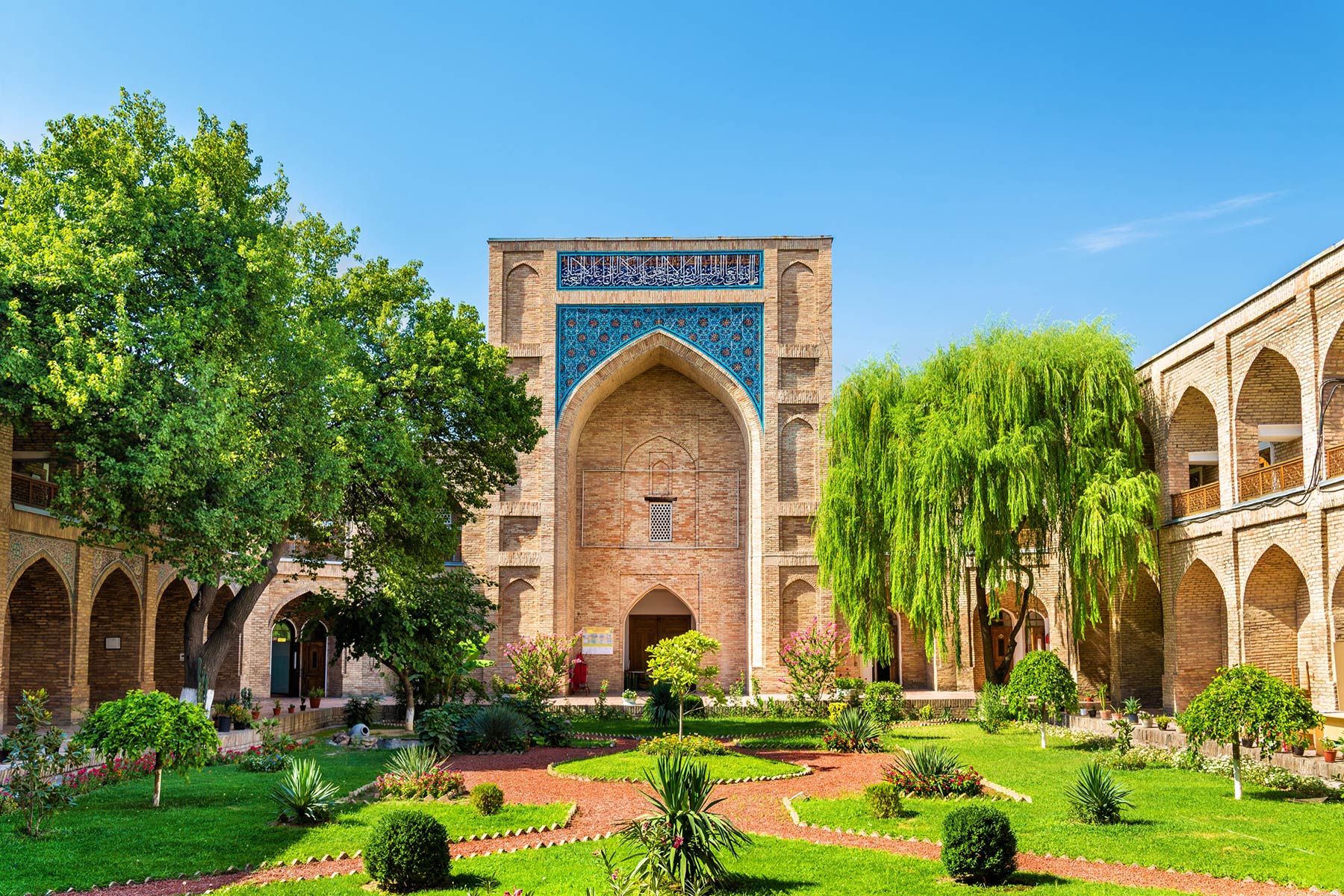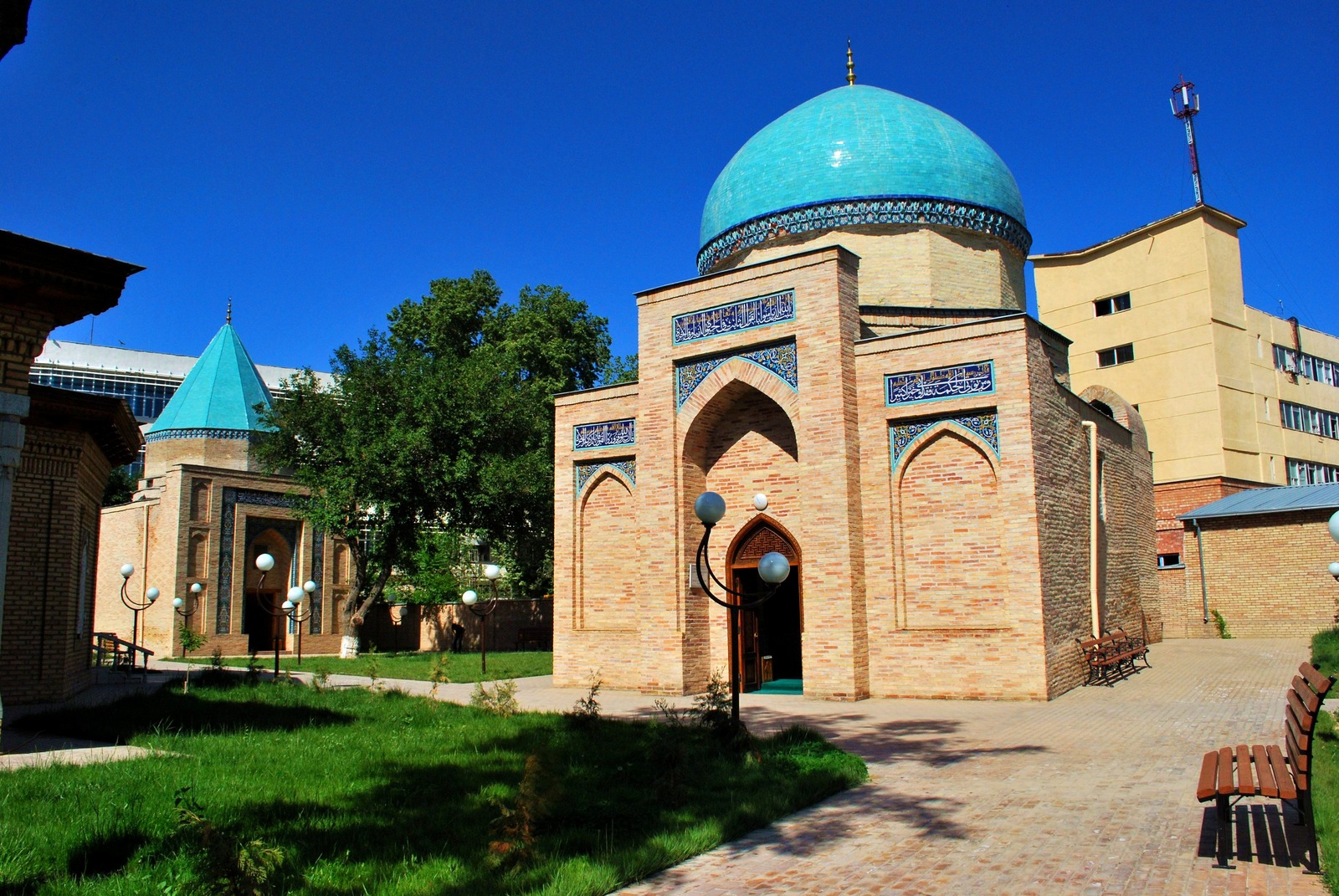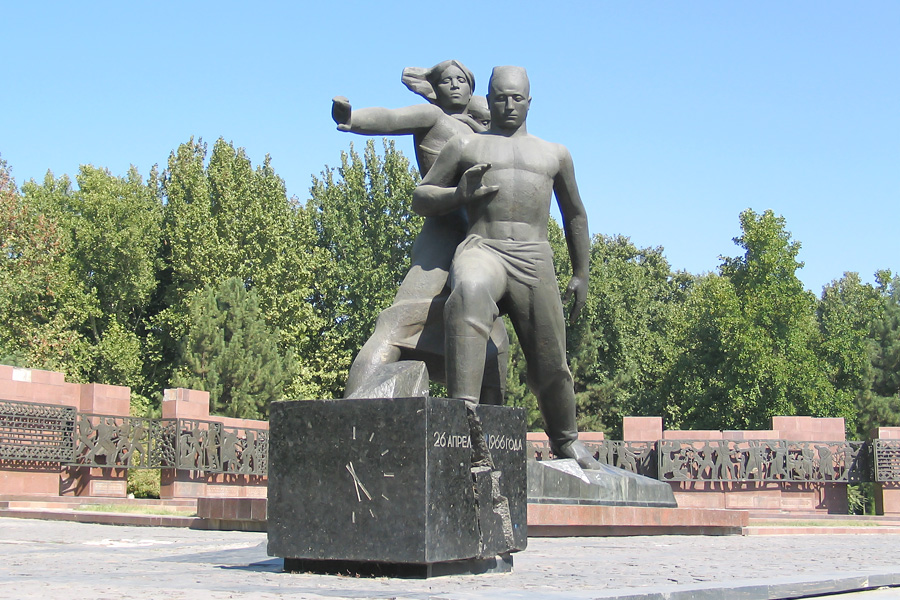Madrassah of Kukeldash
Built in 1570 by the ruler of Dervish Khan, known as Kukeldash, which means “khan’s milk brother”, the madrasah was originally a Muslim school. In the XVIII century, madrassas began to be used as a caravanserai for merchants. In the XIX century, the madrasah served as a fortress of the Kokand khans. Until 1865 the KukeldashMadrassah served as a place of public execution.

Madrasah was repeatedly in ruins. Destroyed by the earthquakes of 1866 and 1886, the madrasah was restored. The restoration of the madrasah was carried out in the 50-70s of the XX century.
To the north-east of the Kukeldash madrassa, an earlier monument was preserved, the construction of which is connected with the name of KhojaAhrar. This is the Friday Mosque.
All these buildings are organically woven into the exotic atmosphere of the Chorsu bazaar, with its bright colors, noise and vanity. The market has long attracted the attention of Russian and Western European travelers and tourists.
The Hazrati Imam Ensemble is a religious complex in Tashkent. The ensemble was erected near the grave of the Imam of the city of Tashkent, a scholar, a connoisseur of the Koran and hadith, one of the first Islam preachers in Tashkent, a poet and artisan of Khazrati Imam (his full name is Abu Bakribn Ismail al-Kaffal al-Shoshiy). According to historical sources, he was also a master in the manufacture of locks and keys, for which he received the nickname “Kaffal”, which means “Zamochnik”, commanded 72 languages and translated the Old Testament (Torah) into Arabic.
In addition to the buildingsthere is a library of Oriental manuscripts and the Qur’an of the Caliph Uthman.
There are 353 large parchment sheets in the Koran. At first the Koran was in Medina, then in Damascus and Baghdad. From Baghdad to Samarkand, the Koran was transported by Tamerlane. In 1869, the Qur’an of Usman was taken to St. Petersburg, where it was proven to be authentic. From there the Koran was transferred to Ufa, and only after that the Qur’an of Usman was transported to Tashkent.
The Qur’an of Usman, stored in Tashkent, is the only surviving original manuscript of the Koran. This is evidenced by a certificate issued by the UNESCO International Organization on August 28, 2000.
Independence Square
Independence Square – the central square of the capital of Uzbekistan in Tashkent, where festive events and military parades are held in the days of solemn events and state holidays.
The administrative buildings of the Cabinet of Ministers and the Senate are located on the square.
The entrance to the Mustakillik square is decorated with the arch “Ezgulik” (“Good and noble aspirations”), over which the storks ascend.
Monument of Independence (1991) and the Monument of the Happy Mother (2006), which was performed by the sculptors Ilkhom and KamolJabbarov.
On the square there is also a memorial – Memory Square, dedicated to those who did not return from the fields of World War II. Their names are written in gold letters in the “Book of Memory”, which is located here. The memorial is the figure of the Sorrowful Mother bent by the eternal fire, who did not wait from the fronts of that war of her children.

The ensemble of Sheikhantaur is an architectural complex, the center of which is the Mausoleum of Sheikh Khovendi at-Tahura (Sheikhantaur). One of the most important architectural monuments of Tashkent, Uzbekistan. It is located in the center of modern Tashkent in a quadrangle, formed by the streets of Alisher Navoi, Shaykhantohur and Abdullah Kadiri.
Inside the mazar, next to the tombstone is the unique, preserved to this day, fossilized sacred Saur Iskander. Sauri are coniferous trees of local breed. Around the mausoleum was a whole grove of sauras that were lifeless already in the XV century. It is believed that their origin is associated with the name of Alexander the Great, who is highly revered in the East, as a mythical hero or Pahlavan. It is possible that precisely because of these memorable coniferous trees, this place was chosen for the burial of Sheikhantaur. Dimensions of the mausoleum: width – 16.2 × 9 m, height – 12.8 m .

Museum of the memory is the museum of the victims of repression – a museum in Tashkent. It is one of the unique objects of the Academy of Sciences of the Republic of Uzbekistan
The exposition of the museum is divided into 10 sections, relating to different periods of the history of Uzbekistan from the end of the XIX century until gaining independence.
Monument “Courage”
The official opening of the “Courage” memorial in Tashkent took place on May 20, 1970. The monument was created by sculptor Dmitry Ryabichev in memory of the earthquake in 1966. The artistic image of the monument is enclosed in the image of a cube of black granite, as a symbol of the earth through which the split that embodies the tragedy takes place. On one side is cut the date of the earthquake: April 26, 1966. On the other side, the dial of the clock with arrows indicating the time of the tragedy is carved – 5 hours and 23 minutes. The crack from the cube goes to the bronze composition depicting the family – a woman clinging to her child, with the other hand doing a detaching motion, as if protecting the baby from trouble; both of them are obscured by a man. To the marble pedestal there are 7 paths leading to 14 stelae with bas-reliefs depicting the labor of the builders.

Tashkent Metro (Tashkent, Toshkent metropoliteni) is a system of metro lines in Tashkent (Uzbekistan).
The construction of the Tashkent Metro began in 1968-1970, and the first line (later called Chilanzar) of 12.2 km in length with 9 stations was launched in 1977
At present, the length of the three subway lines with 29 stations is 36.2 km. In 2017, the metro carried 62 million passengers. Given that Tashkent covers an area of 334.8 km² and has more than two and a half million inhabitants, the metro is a strategically important but underloaded transport system.


